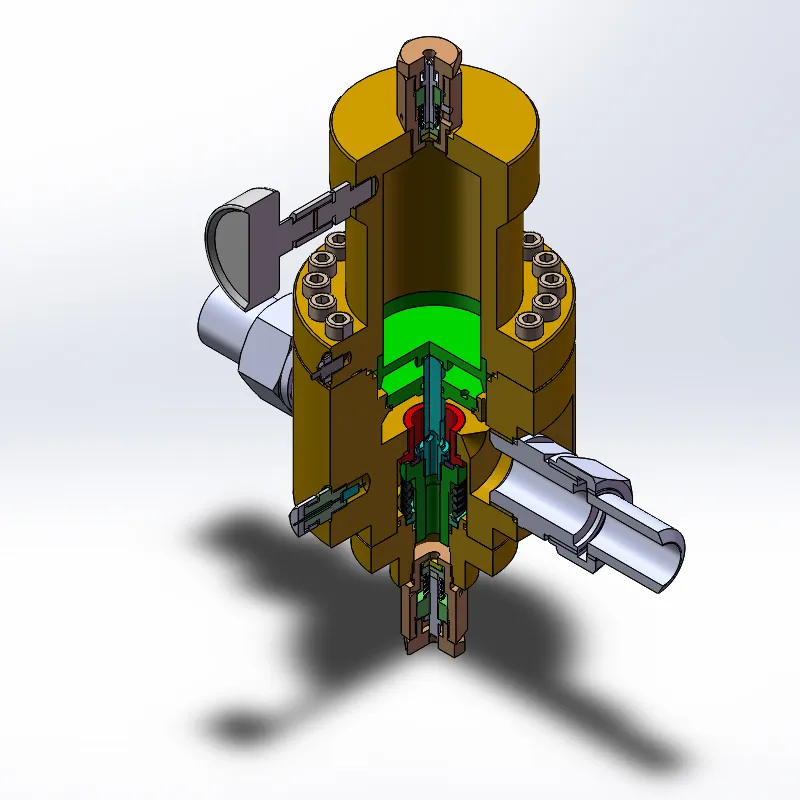
Dec . 09, 2024 17:41
Back to list
Understanding the Function and Importance of Shut-Off Valves in Various Systems
Understanding Shut-off Valves Their Importance and Applications
Shut-off valves are crucial components in various industrial and domestic applications, serving as gatekeepers of fluid flow in a system. These valves allow operators to control the flow of liquids and gases effectively, making them essential in numerous settings such as water supply systems, heating systems, and industrial processes. Understanding the function, types, and applications of shut-off valves can help ensure their effective use in any operation.
What is a Shut-off Valve?
A shut-off valve is designed to stop the flow of fluids through a pipe or system. It can either allow the fluid to pass through or completely block it, thereby shutting off the flow. This functionality is essential for the maintenance of pipes, preventing leaks, and ensuring safety in systems that transport hazardous materials.
Types of Shut-off Valves
Shut-off valves come in various types, each suited for specific applications and conditions. Some of the most common types include
1. Ball Valves These valves use a spherical disc to control flow. When the ball is turned, the hole aligns with the pipe for flow or misaligns to stop the flow. Ball valves are known for their durability and ability to provide a tight seal.
2. Gate Valves Gate valves operate using a gate that can be raised or lowered to allow or block fluid flow. They are often used in applications where the valve is either fully open or fully closed, as they are not ideal for throttling flow.
3. Globe Valves These valves have a spherical body design and are used to regulate flow within a pipeline. They are effective for throttling but can create a pressure drop when fully opened compared to others.
4. Butterfly Valves These valves utilize a rotating disc to control flow. Their compact design and quick operation make them ideal for large-scale systems where space saving and efficient control are essential.
shut-off valve

5. Check Valves Although not traditional shut-off valves, check valves prevent backflow in a system, ensuring that fluid flows only in one direction. They are vital for protecting equipment and maintaining system integrity.
Applications of Shut-off Valves
Shut-off valves are widely utilized across various industries. In residential plumbing, they control water supply to sinks, toilets, and appliances. For heating systems, shut-off valves help regulate the flow of hot water or steam, allowing for maintenance without draining the entire system.
In the oil and gas industry, shut-off valves play a critical role in pipelines. They ensure that when maintenance is required, or in the event of an emergency, the flow of potentially hazardous materials can be quickly halted to prevent spills or accidents.
Water treatment facilities also rely on shut-off valves to manage the flow of water through filters and treatment processes, ensuring that clean water is supplied without interruptions.
Importance of Regular Maintenance
Like any mechanical component, shut-off valves must be properly maintained to ensure their functionality. Over time, wear and tear, corrosion, and other factors can affect their performance. Regular inspections and maintenance can help identify potential issues before they become significant problems, ensuring the safety and efficiency of the systems they serve.
Conclusion
In conclusion, shut-off valves are essential components in a wide range of applications, providing crucial control over fluid flow. Understanding their various types and functions allows industries and homeowners alike to utilize them effectively. By ensuring regular maintenance, these valves can help maintain system integrity and efficiency, safeguarding against leaks and ensuring the smooth operation of fluid transport systems. Whether in industrial applications or everyday plumbing, shut-off valves are fundamental to maintaining a reliable and safe flow of fluids.
Latest news
-
Safety Valve Spring-Loaded Design Overpressure ProtectionNewsJul.25,2025
-
Precision Voltage Regulator AC5 Accuracy Grade PerformanceNewsJul.25,2025
-
Natural Gas Pressure Regulating Skid Industrial Pipeline ApplicationsNewsJul.25,2025
-
Natural Gas Filter Stainless Steel Mesh Element DesignNewsJul.25,2025
-
Gas Pressure Regulator Valve Direct-Acting Spring-Loaded DesignNewsJul.25,2025
-
Decompression Equipment Multi-Stage Heat Exchange System DesignNewsJul.25,2025

